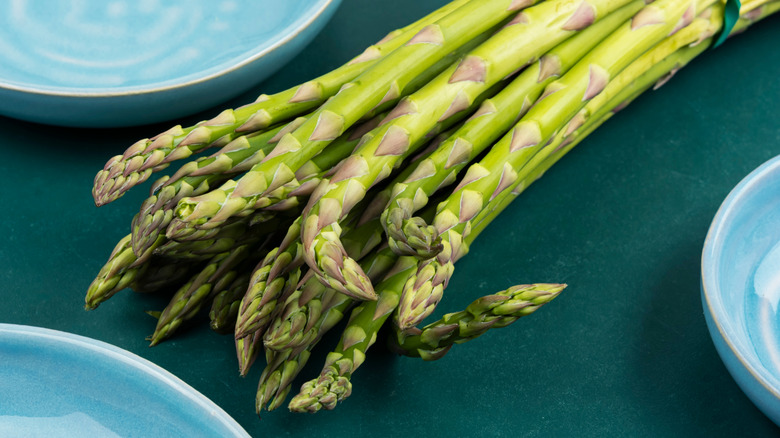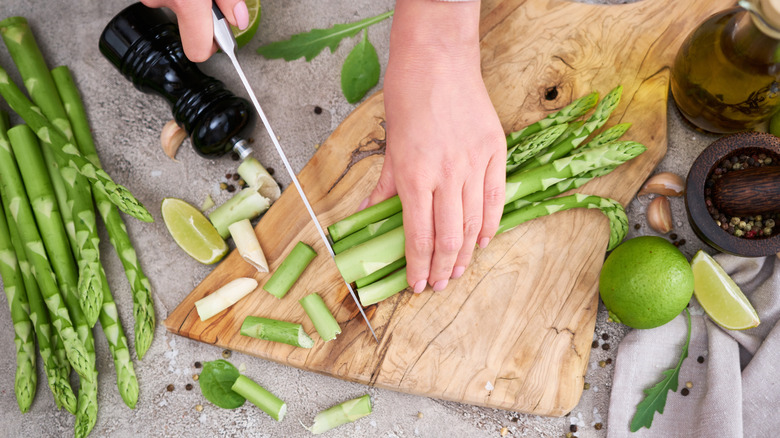Never Skip One Prep Step When Cooking Asparagus
No dish celebrates the arrival of spring quite like fresh, grassy asparagus drizzled with buttery homemade hollandaise. But to get the best out of the vegetable, you need to prepare it properly — and that means trimming it. While asparagus tips are super-tender, the stems can be tough, woody, fibrous, and generally unpleasant to eat.
You've probably come across the theory that it's better to snap rather than cut asparagus. The perceived wisdom is that you simply bend the spear, and it will snap at just the right point. However, the bad news for snappers is that this technique is often inaccurate since the spear could snap at multiple different points depending on exactly how and where you're holding it. Which could mean that you end up wasting perfectly good asparagus.
To avoid making this mistake with asparagus, it's much better to cut the spears with a sharp knife. How much you need to trim will depend on the size — delicate thinner stems will not need trimming as much as thicker, woodier spears. It's easiest to line up the stems and trim the tough ends where the color changes from green to white. If you're unsure, cut roughly an inch from the bottom and check that it looks moist and tender inside. And, if your stalks are especially thick or tough-looking, you can also peel the outer layer of the bottom portion with a vegetable peeler to make it more tender once cooked.
How to use asparagus ends in other dishes
After cutting and peeling your spears, it's disheartening to see a heap of asparagus trimmings on the cutting board. But while these stringy ends may seem inedible, there are actually lots of ways you can use them to make the most of the spring vegetable and avoid waste. Try blitzing them in a food processor with some other vegetables before simmering in water or broth for a richly flavored soup – strain it for a smoother texture. Any peelings can also be simmered and strained to make a tasty vegetable stock.
Aside from soup, you can use asparagus stock made from ends and peelings for other dishes, too. Use it to amp up the taste of a risotto with tender spring vegetables, or in a pasta sauce. You can freeze the stock for up to six months, giving your dishes a spring-like vibrancy even when asparagus is not in season. You could also coat your asparagus peelings in flour and fry them in hot oil for a crisp, tasty snack — or to garnish your pasta or risotto.
The woody ends of asparagus also make a great salad dressing. Just simmer the tough ends and blitz them in a food processor with oil, white wine vinegar, and herbs. Or use some great value sherry vinegar to add delicious nutty notes. The tough ends can also be simmered and blitzed with walnuts or pine nuts, olive oil, lemon juice, garlic, herbs, and parmesan to make asparagus pesto. Serve it with grilled meat, fish, or vegetables, stir it through mashed potatoes, or use it to make a pesto and cottage cheese pasta sauce.

